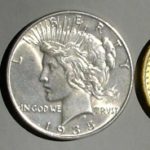Australian dollar fell against its US counterpart on trading Wednesday, after Westpac – Melbourne Institute published the results of a survey on consumer sentiment in Australia, which showed that the corresponding index dropped in December.
AUD/USD reached a session low at 0.9116 at 6:45 GMT, after which consolidation followed at 0.9118, losing 0.34% for the day. Support was likely to be received at December 10th low, 0.9081, while resistance was to be encountered at December 10th high, 0.9167.
According to a survey by the Westpac – Melbourne Institute, the index of consumer sentiment in Australia dropped in December, marking its lowest level since July and neutralizing gains recorded after the election of the new government. The index fell 4.8% to reach a reading of 105.0 in December. The indicator remained 4.3% below its average reading over the past three months. Confidence among consumers in the country has been dampened because of the economic outlook in the next 1 – 5 years. Respondents in the survey also expressed concerns regarding employment, as their expectations, that the rate of unemployment will increase, rose 4.6%.
“Westpac has maintained a forecast for another rate cut of 25bps at (the) February meeting for some time,” said Westpac chief economist Bill Evans, cited by Investing.com. “It may be that the interaction of forces which we envisage takes longer to become apparent to the Board and the rate cut decision is delayed for some months. Of particular concern here is whether the housing data over the next few months is sufficiently reliable. For now, we retain our call for a cut in February while fully recognizing that a delay to that move is also a realistic outcome.”
Australian rate of unemployment probably climbed to 5.8% in November, while employers in the country probably added 10 000 new jobs, according to the median estimate by experts participated in a survey by Bloomberg News. The official report is scheduled for release on Thursday.
“The big risks for the Aussie and kiwi are tomorrow’s labor force data and the RBNZ meeting,” said Peter Dragicevich, a currency strategist in Sydney at Commonwealth Bank of Australia, cited by Bloomberg. “If the U.S. budget deal is passed this week, there is a growing chance that the Fed could begin to taper asset purchases at next week’s meeting and that could see the U.S. dollar pick up into year-end.”
Meanwhile, the US dollar received support after US policymakers unveiled an agreement to ease automatic spending cuts by about 60 billion USD over two years and cut nations deficit by 23 billion USD. US Senator Patty Murray, a Democrat, and Republican Representative Paul Ryan said that the budget proposal could prevent a government shutdown and could favor economy. The agreement sets a budget ceiling for the fiscal 2014 at 1.012 trillion USD and for the fiscal 2015 – a ceiling at 1.014 trillion USD.
The Federal Open Market Committee (FOMC) may begin to scale back the 85-billion-USD monthly asset purchases at the meeting on policy on December 17th-18th rather than wait until January or March, according to 34% of economists, participated in another survey conducted by Bloomberg on December 6th. In November’s survey 17% of respondents projected a tapering in December.
Elsewhere, the Aussie was gaining against the kiwi dollar, with AUD/NZD cross up 0.19% on a daily basis to trade at 1.1034 at 8:03 GMT, after touching a five-year low at 1.0950 on December 9th. EUR/AUD pair was advancing 0.37% to trade at 1.5098 at 8:05 GMT.





